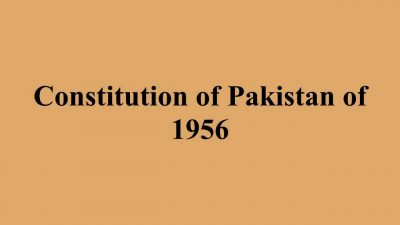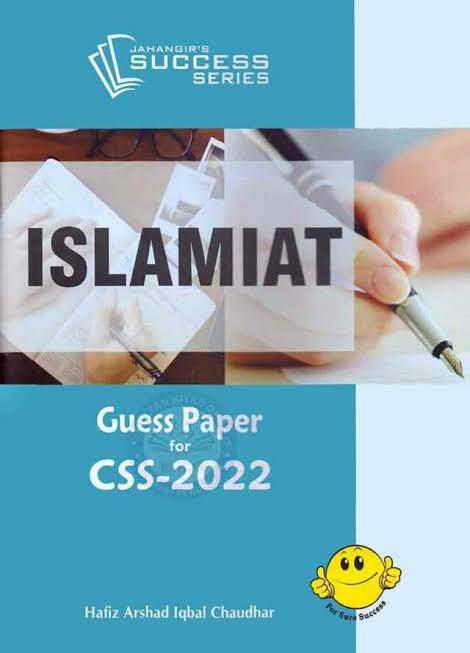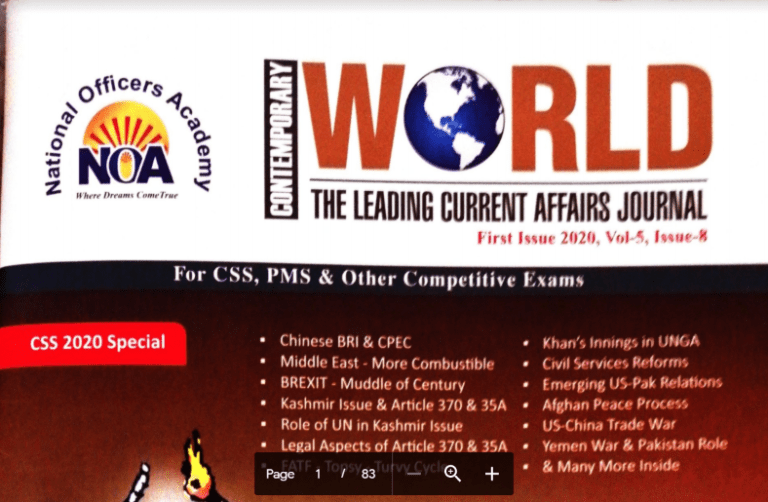Constitution of Pakistan 1956.

Constitution of Pakistan 1956.
What is constitution:
Constitution is a system of fundamental laws and principles that prescribes the nature, functions, and limits of a government or another institution. Here we will discuss about constituion of pakistan (1956).
Constitution Of Pakistan:
Constitution of Pakistan plays an important role for running a country affairs, in other words, we can say is the bible of the country’s affairs. According to this constitution, we make laws we can implement laws and set judication on it to summarise it. Constitution is the supreme law of land.
Constitutional issues of 1956
1956 Pakistan Constitutional issues are as follows
1.Federalism
2.Representation
3.Separate or Joint Electorate
4.National Language Issue
5.Parliamentary or Presidential System
6.Islamic Or Secular State
Federalism
There was consensus on federalism but there were many issues to be settled. Pakistan consisted of two parts. Division of power was the most difficult part between two wings and among the provinces. Provinces were demanding more autonomy and provincial rights. Strong Centre tradition continued in 1956 as well.
Representation
East Pakistan and West Pakistan were different in population in size and thus appropriate representation was an issue. Not only Wings but also the provinces were differently, diversely filled. Everyone was sensitive to their representation and provincial autonomy. To have a standard formula basic principles committee was formed on March 12 1949.
Separate or Joint Electorate
The minorities did not favour separate electorate after independence. Religious elements supported this as a part of Heritage. East Pakistan decided for joint electorate. West Pakistan decided for separate electorate.
The National Language Issue
Before independence, the Muslim Elite all over India adopted Urdu. In 1948 Jinnah declared that Urdu would be the national language. Opposition against Urdu was in East Pakistan. It was more prominent after Jinnah’s death. Language movement started in East Pakistan from February 1952. Two language formula was adopted in 1954.
Parliamentary or Presidential system
There was a consensus for parliamentary system. There was Limited demand for presidential system.Debates were continued on this issue. These debates delayed the process of constitution making in Pakistan.
The Islamic or secular state
From the very beginning, there was an agreement that the state will have close relationship with Islam. Muslims defined their National identity with reference to Islam and its heritage. Some opposition came from the Congress members of the constituent assembly, and a few secularists. The Constituent assembly took time to define the precise relationship between the state and Islam. Objectives resolution rejected theocracy in Pakistan and provided the basic objectives for the future constitution of Pakistan.
Issues to be addressed
What would be the scope of legislation for an elected assembly? Who will decide about Islamic nature of laws? Shoulda board of Ulema be given this power? Position of women, vote and work? What about religious minorities? Discussion in the constituent assembly and outside continued. An active demand by religious elements for Islamic political system. Leading Ulema of various sects presented famous 22 points to provide a religious base to the future constitution.
Basic PrincipleCommittee Reports
After the objective Resolution was passed in 1949 the constitution assembly set up a number ofcommittees to draw the future constitution on the basis ofthe principles given in the objective resolution. Most important among those committees was the basic principlecommittee set up on March 12, 1949 by Khawaja Nizamuddin on the advice of prime minister Liaquat Ali Khan.
The primary function of this committee was to determine the basic principles of the future constitution of Pakistan. The committee comprised 24 members. Maulvi tamiz Uddin Khan head it, and Liaquat Ali Khan was its vice president. The committee presented is interim report to the Legislative Assembly in 1950. This was a short document presenting the guidelines and principles of the future constitution of Pakistan.
Criticism
Representatives of East Pakistan raised objections against the report. The main criticism was against the quantum representation in the central legislature. East Pakistan with the majority of the population was given an equal number of seats in Upper house as West Pakistan, thus reducing the Representation of the majority of population in Pakistan by one fifth East Pakistan representatives also did not like Urdu being declared as the only national language of Pakistan.
Second BPC Report
Liaquat Ali Khan agreed to considered objections with an open mind. He therefore postponed the deliberation of the constituent assembly in order to enable the basic principles committee to examine and consider suggestions that might be made by the people regarding the principles of the constitution. In order to include public opinion Liaquat Ali Khan called forth general comments and suggestions by the public on the report. A large number of proposals and suggestions were sent by the public which was examined by the special subcommittee headed by Sardar AbdurRabNishtar. The setting up of A committee was the right and commendable step but its working was immensely affected by the assassination of Liaquat Ali Khan. The subcommittee however gave its report to the basic principle committee in July 1952 which was presented by Khwaja Nizamuddin in the national assembly on December 22, 1952.
According to the basic principle committee report, the head of the state was to be Muslim elected by a joint session with the majority vote of the central legislature for five years. The Prime Minister was to be appointed by the head of the state. The central legislature was to consists of two houses; the house of units with 120 members and the house of people with 400 members. There were to be three lists of subjects for the division of power between the Federation and the units. The adult franchise was introduced. The Judiciary was to be headed by the supreme court of Pakistan consisting of a chief justice and two to six other judges. The chief justice was to be appointed by the head of state. There was to be high court for each of the units of East Pakistan, Punjab, Sindh, Baluchistan, and NWFP. A Board of Ulema was to be set up by the head of the state and provincial governors. The Board of Ulema was to examine the law making process to ensure that no law was passed that went against the principles of the Qur’an and Sunnah. The objective Resolution was adopted as a preamble the proposed constitution.
Criticism
The basic principles Committee’s report was severely criticized and raised much bitterness between East and West Pakistan. The Prime Minister Khawaja Nizamuddin however welcomed the report and commended it as a valuable document according to the aspirations of the people of Pakistan. However the fact was that the Nation was not satisfied with the report, and hence there was a severe deadlock in the making of the constitution.
Muhammad Ali Bogra Formula
While taking charge as prime minister Muhammad Ali bogra declared that formulation of the Constitution was his primary target. He worked hard on On this project and within six months of assuming power came up with the constitutional formula. His constitutional proposal known as the Bogra formula was presented before the constituent assembly of Pakistan on October 7, 1953. The plan proposed for a bicameral legislature with equal representation for all the five provinces of the Country in the Upper House. A total of 50 seats were reserved for the Upper House. The 300 seats for the lower house were to be allocated to the provinces based on proportionate representation. 165 seats reserved for East Pakistan, 75 for Punjab, 19 for Sindh and Khairpur, 24 for NWFP, tribal areas and the states located in NWFP, and 17 for Baluchistan, Baluchistan States Union, Bahawalpur and Karachi
In this way East Pakistan was given more seats in the lower house then the combined number of seats reserved for the federal capital, the four provinces and the princely states of the Western wing. So, in all both the wings were to have 175 seats each in the two houses of the Legislative Assembly. Both the houses were given equal power and in case of the conflict between two houses the issue was to be presented before a joint session.
In order to prevent permanent domination by any wing a provision was made that if the head of the state was from west Pakistan the Prime Minister was to be from east Pakistan and vice versa. The two houses of the Legislative Assembly formed the electoral college of the presidential election and the president was to be elected for a term of five years. In place of the board of Ulema, the Supreme Court was given the power to decide if a law was in accordance with the basic teachings of the Holy Qur’an and Sunnah or not.
Reaction to Bogra formula
Unlike the two reports of the basic principle committee the bograformula was appreciated by different sections of the society. There was great enthusiasm amongst the masses as they considered it as a plan that could bridge the Gulf between the two Wings of Pakistan and would act as a source of Unity for a country. The proposal was discussed in the constituent assembly for 13 days and a committee was set to draft the constitution on November 14 1953. However before the constitution could be finalized the Assembly was dissolved by Ghulam Muhammad, the Governor General of Pakistan.
Dissolution of first constitutional assembly
October 1954, GG (Governor General) dissolved the CA (Constitutional Assembly) the was challenged in the Sindh Court by Maulvi Tamizuddin. The court declared The dissolution illegal but the federal court upheld the GG action but asked for setting up an elected CA.
2ndConstitution assembly
Ghulam Mohammed called a convention on May 10, 1955. All its members were to be elected indirectly ( by the provincial assemblies). In this way the 2nd CA came into existence
One Unit Scheme, Oct 1955
The one unit was geopolitical program launched by the government of Pakistan led by the Prime Minister Muhammad Ali Bogra on 22 November 1954. The program was believed to be enacted after the government faced the difficulty of administrating the two un equal polities of Pakistan separated from each other by more than a thousand miles of diminish the differences between the two regions, the program merged four provinces of the west Pakistan into a single province as was the case with East Pakistan (now Bangladesh).
The1956 Constitution
After the approval of objective resolution in 1949, the constituent assembly formed many committees including the basic principle committee headed by the Prime Minister. The committee , under the chairmanship of Liaquat Ali Kha, presented the interim report on September 28th1950, which was criticized due to its incompleteness and was asked to be revised. The second report of basic principle committee presented to Khwaja Nizamuddin in 1952 but this report was also rejected. Later on Ch. Muhammed Ali started the constitutional process in Pakistan when he became Prime Minister.
Constitution of 1956
After taking charge Ch. Muhammed Ali started the working on constitution making. The constituent assembly passed the draft of the Federal parliamentary constitution in 1956 which was enforced on March 23, 1956 in the country. This constitution contained of 234 articles.
The Islamic provisions of the constitution (1956)
Islamic provisions of a constitution of 1956 are as under:
Parliamentary System
Executive authority vested in the President who exercised it on the advice of prime minister except in the matters he had discretion. President had ceremonial functions and exercise Limited powers the president would be of 45 years of age, Muslim and qualified to be a member of National assembly. He was to be elected by national assembly (NA) and provincial assemblies.
Prime Minister (PM)
President would appoint PM. President could not remove him unless he was sure that PM did not enjoy the support of majority in the National Assembly (NA). The president would be its sole judge. He could ask PM to show his support. Cabinet was collectively responsible to NA. PM was the head of government assisted by cabinet.
Unicameral legislature
National assembly was the only House of Parliament having a membership of 300 plus 10 women seats. Method of direct elections was adopted for general seats. All legislative powers were arrested with NA. President could return, reject or sign the bills. Regarding monetary bills of ordinary expenditure NA had all Powers but they could not vote on consolidated Fund List. Salaries of president judges Federal Service Commission etc. were to be paid through consolidated fund. NA could control the Executive.
Federal System
The constitution provided three lists; federal, provincial and concurrent. There were two provinces in the Federation of Pakistan.
Provincial Structure
All the provincial level there was elected assembly. The parliamentary system under the nominal headship of governor. The real powers were given to chief ministers and his cabinet. Centre had some overriding powers and some emergency powers too.
Independent Judiciary
At centre the highest court was Supreme Court, then High Courts in provinces and subordinate Court were established. Higher courts had the power of interpretation of the constitution. They could hear the disputes between governments. They were Guardians Of the legal rights of the citizen.
Fundamental Rights
Civil and political rights were given to the people of Pakistan but they could be suspended in case of emergency.
Directive Principles of State Policy
These principles provided guidelines for policy making. Principles of objective resolution were included as preamble. The Other principles included surety about Islamic practices, Welfare of people, non-discrimination and fulfilment of basic needs etc.
Islamic Character
The name of the country was the Islamic Republic. Objective Resolution was the Preamble. Islamic classes were part of Directive principles. No law can be made to violate Islamic principles and teachings. Existing laws would be brought in conformity with Islamic teachings. A commission was to be appointed to examine the laws for bringing them in conformity. Whether a law is Islamic or not, NA had to decide. The matter could be taken up with the judiciary. Islam was not declared state religion. Riba (Interest) will be eliminated from the country as soon as possible.
Sovereignty of Allah
In the constitution of 1956, objective Resolution was included in the Preamble of the constitution and sovereignty over the whole world belongs to Allah Almighty.
Organization of Islamic Research
According to the constitution of 1956 it was declared the organisation of Islamic research would be established , which will research the legislation and enforcement of Islamic principles.
Protection to Minorities
Rights of minorities will be protected in the country. They can spend their lives according to their own religion and culture.
Relation with Muslim Countries
Pakistan will establish good relations with other Islamic countries for the unit of Muslim World.
Welfare State
Pakistan will be a welfare state, and the government will try its best to eliminate the poverty & illiteracy from the country. Moreover, basic facilities like food, shelter & clothes shall be provided to the people.
End of Racial & Provincial Discrimination
The government will try to eliminate racial, provincial, communal and other discrimination from the country.
End of Illiteracy
The government will take specific steps to eliminate the illiteracy from the country and education will be declared free and compulsory in Pakistan. The government will also take suitable steps for the adult education in the country.
Compulsory Teachings of the Holy Quran
In the constitution of 1956 it was declared that the government should take steps for the compulsory education of the Holy Quran in Pakistan.
Free Judiciary
Judiciary shall be independent and will work without any political and economic pressure.
Separate Electorate
It was declared in the constitution of 1956 that separate electorate would be provided to the minorities.
National Language
Urdu will be the national language of the country.
Cancellation of the Constitution of 1956
Constitution of 1956 was constituted after the hard struggle of nine years from 1947 to 1956, chief of Army Staff General Ayub Khan dismissed the constitution of 1956 on 7th October 1958. Constitution of 1956 was implemented in Pakistan only for 2 years and 7 months. General Ayub Khan dismissed the government and later on President of Pakistan Sikandar Mirza. He imposed first Martial law in the country on 7th October 1958.






